University of Birmingham
Type of resources
Topics
Keywords
Contact for the resource
Provided by
Years
Formats
Representation types
Update frequencies
Resolution
-
This dataset contains fitness-linked life history traits, environmental data, and protein and gene expression data for Daphnia magna. Life history data were measured in common garden experiments. For each clone of the same genotype across all experiments, size at maturity (distance between the head and the base of the tail spine), age at maturity (first time eggs were observed in the brood chamber), fecundity (total number of offspring released summing first and second brood), and mortality were measured. Critical thermal maximum (CTmax) was measured on the experimental animals. Environmental data consisted of Secchi disk depth (water transparency) ; total phosphorous; and total nitrogen for the years 1971–1999; a record of pesticides 1955–2010; temperature records over the past century 80 km from Lake Ring. Organic and carbonate contents of the sediment was estimated using the loss on ignition (LOI) method. Hb protein data consisted of constitutive Hb protein crude content animals reared in normoxic (saturated oxygen level) conditions at two experimental temperatures, 20 and 30°C. Heat shock protein expression was measured in four heat shock proteins (HSP20, HSP60, HSP70 and HSP90). Total RNA, qPCR, mean CT (cycle threshold) value per sample and per protein were collected. Full details about this dataset can be found at https://doi.org/10.5285/13f878dc-ef87-45d5-be8c-5733c88c30e9
-
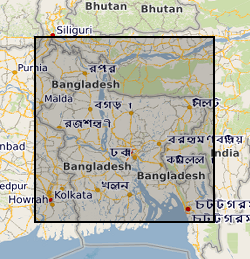
This dataset contains data from a river multibeam and seismic survey which took place in 2013 and 2014 at scour sites within the Brahmaputra river basin in Bangladesh. The survey was carried out as part of a joint project between the Universities of Birmingham, Southampton and Exeter. "The sedimentology of fluvial megascours" was a scientific research project funded by NERC. The purpose was to collect the data necessary to validate the first generic numerical model of scour zone stratigraphy that will be widely applicable to a broad range of large rivers. River bed bathymetry data were collected using a multibeam echosounder. Sub bottom seismic profiling data were collected using a surface tow boomer and chirp system. Technical details of the survey are contained in the cruise report of the survey which comprises part of the metadata. Some of the data has been accepted for a publication in the journal 'Sedimentology' which will be published in 2018 with the title 'The Sedimentology of channel confluences'.
-

The data result from a cooperative project between the U.K., U.S., Germany, Spain, and Portugal. This 2013 seismic experiment surveyed the Galicia Bank region off Iberia with the RV Marcus Langseth. The goal was to collect 3D seismic reflection data specifically designed to reveal the 3D structures generated during the rifting of the Galicia margin and to study the rifted continental to oceanic crust transition in the Deep Galicia Margin west of Spain. The data correspond to a 68.5km x 20 km volume down to 14s TWT with a nominal inline spacing of 6.25 m and a cross-line spacing of 50m, including 800 inlines and 5500 cross-lines. References Bayrakci, G., Minshull, T.A., Sawyer, D.S., Reston, T.J., Klaeschen, D., Papenberg, C., Ranero, C., Bull, J.M., Davy, R.G., Shillington, D.J., Perez-Gussinye, M., and Morgan, J.K., 2016, Fault-controlled hydration of the upper mantle during continental rifting, Nature Geoscience, vol. 9, p. 3840388, DOI: 10.1038/ngeo2671. URL: http://www.nature.com/ngeo/journal/v9/n5/full/ngeo2671.html R. G. Davy, J. V. Morgan, T. A. Minshull, G. Bayrakci, J. M. Bull, D. Klaeschen, T. J. Reston, D. S. Sawyer, G. Lymer, D. Cresswell, 2017. Resolving the fine-scale velocity structure of continental hyperextension at the Deep Galicia Margin using full-waveform inversion. Geophysical Journal International, Volume 212, Issue 1, 1 January 2018, Pages 244–263, https://doi.org/10.1093/gji/ggx415 C.Nur Schuba, Gary G.Gray, Julia K.Morgan, Dale S.Sawyer, Donna J. Shillington, Tim J.Reston, Jonathan M.Bull, Brian E.Jordan, 2018. A low-angle detachment fault revealed: Three-dimensional images of the S-reflector fault zone along the Galicia passive margin. Earth and Planetary Science Letters, 492, (2018), 232–238, https://doi.org/10.1016/j.epsl.2018.04.012
-
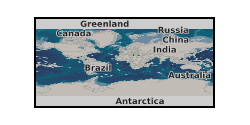
speleothem data - ICP-AES (Inductively coupled plasma atomic emission spectroscopy) , incomplete soil acidity experiments - soil water chemistry after acidification - incomplete
-
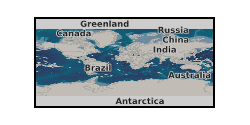
This dataset contains numerical model output of a morphodynamic and sedimentological simulation of a large river confluence based loosely on the Jamuna-Ganges junction in Bangladesh. The work was carried out as part of a joint project between the Universities of Birmingham, Southampton and Exeter. "The sedimentology of fluvial megascours" was a scientific research project funded by NERC. One aspect of the project was to undertake numerical simulations (the data described here) with which to compare with river bed bathymetry data (collected using a multibeam echosounder) and sub bottom seismic profiling data (collected using a surface tow boomer and chirp system). The data has been accepted for a publication in the journal 'Sedimentology' which will be published in 2018 with the title 'The Sedimentology of channel confluences'.
-
This dataset contains breakthrough curves of conservative (fluorescein) and reactive (resazurin and resorufin) tracers resulting from instantaneous tracer experiments in a lowland agricultural stream. Breakthrough curves were measured seasonally at four locations within the stream, creating three experimental reaches, in the Wood Brook, Staffordshire from July 2016 to March 2017. Breakthrough curves were measured in-situ using on-line fluorometers configured to measure the excitation of fluorescein, resazurin and resorufin every 10 seconds. The breakthrough curves were measured to determine hydrological metrics of advective transport, transient storage and aerobic respiration. The work was funded by the Natural Environment Research Council, UK through a through a Central England NERC Training Alliance Studentship and grant NE/L004437/1, with additional funding provided by the European Union through the H2020-MSCA-RISE-2016 project 734317. Full details about this dataset can be found at https://doi.org/10.5285/5b34d963-d0f0-465e-b395-e955b89e1cd7
-
The dataset contains carbon dioxide and methane emissions, as well as resorufin production (as a proxy for microbial metabolic activity) and dissolved oxygen concentrations, resulting from laboratory incubation experiments of streambed sediments. The sediments were collected from the upper 10 centimetres of the streambed in the River Tern and the River Lambourn in September 2015, with three samples collected from each river. These samples were collected from three areas: silt-dominated sediment underneath vegetation (fine), sand-dominated sediment from unvegetated zones (medium) and gravel-dominated sediment from unvegetated zones (coarse). The sediment was used in laboratory incubation experiments to determine the effect of temperature, organic matter content, substrate type and geological origin on streambed microbial metabolic activity, and carbon dioxide and methane production. The work was carried out as part of a Natural Environment Research Council (NERC) funded PhD (NERC award number 1602135). The work was also part funded through the Seventh Framework Programme (EU grant number 607150). Full details about this dataset can be found at https://doi.org/10.5285/3a0a5132-797c-4ed5-98b9-1c17eaa2f2b7
-
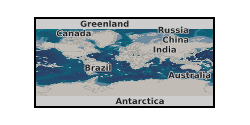
Major and trace element data for partial melts derived from high pressure-temperature experiments on a basaltic starting composition from the Ontong Java Oceanic Plateau.
-
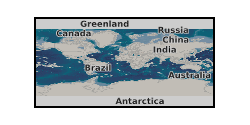
Bibliographic Data - Oral and Poster Presentations given by members of Work Package 5 of the HydroFrame (Hydromechanical and Biogeochemical Processes in Fractured Rock Masses in the Vicinity of a Geological Disposal Facility for Radioactive Waste) project. Presentations given between November 2014 and November 2016.
-
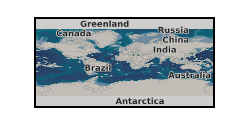
Collection of data from the PhD Thesis 'Development of coupled processes numerical models of tracer, colloid and radionuclide tranpsort in field migration experiments', submitted as part of the RATE HydroFrame WP5. This collection of data includes blank model files in COMSOL Multiphysics and PHREEQC, as described in the PhD thesis. Also included in this data package are different spreadsheets with model outputs from the model files that describe the transport of conservative tracers, colloids and radionuclides in experiments carried out at the Grimsel Test Site, Switzerland as part of the Colloid Radionuclide and Retardation (CRR) and the Colloid Formation and Migration (CFM) experiments (www.grimsel.com).
 NERC Data Catalogue Service
NERC Data Catalogue Service